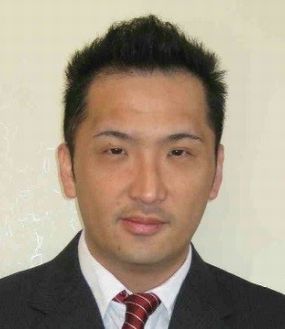IAC News
IAC News No.68, June 2018
Japan Society of Civil Engineers International Activities Center June 4 2018 IAC News No.68
Work on Overseas Projects
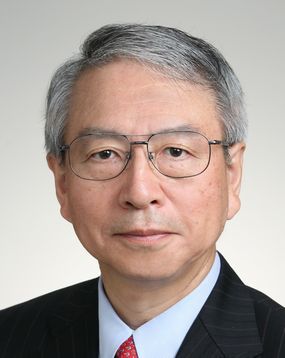
Yutaka Sunohara
Board of Director, JSCE
I introduce some of the projects of port, harbor, and coastal area development overseas which I experienced during my working for the Overseas Coastal Area Development Institute of Japan (OCDI), on the temporal job assignments from the Ministry of Transport (the predecessor of Ministry of Land, Infrastructure, Transport and Tourism).
The first project I worked on was the planning of Apia Port development in the Independent State of Samoa in South Pacific Ocean. The development of Apia Port, which was located in the capital city of Samoa, was planned to extend wharfs and to improve the ferry terminal serving between Samoa and American Samoa, funded by the Japanese Grant Aid.
In Thailand, I worked on the project of inland container depot (ICD) development for the Laem Chabang Port (LCP) which now is the international logistics hub. The objective of LCP was to develop a deep seaport as an alternative for the Bangkok Port which could not accommodate vessels due to its location on Chao Phraya River. However, because the LCP was about140-km away from Bangkok, the development of ICD near Bangkok was proposed to assist smooth container movement to and from the LCP. After some surveys and studies about origins or destinations of foreign trade cargoes, the current use of road and railway networks, and a future development plan, the Lad Krabang area was chosen as the place to build a ICD, and then a master plan for the ICD including scale, leading-in lines of rails and others were drawn up. Some years later I had the opportunity to visit the port and found that it was developed larger than it was planned initially, and many cargoes and ships were busily coming into and out of the ICD. Seeing it, I was filled with sense of pleasure, pride, achievement and joy.
In Laos, I engaged in the Mekong River development project: in that project, the development of Laksi Port was planned, located 4km down from the capital Vientiane, where during the rainy season, the water levels in the Mekong River rose 13 meters higher than the ones during the dry season. I had to obtain an approval and agreement on that project from some official of the Laos Government while I was staying there for a few weeks. I polished up the plan and got everything done within the limited time, carving out more time from my sleeping schedule. The project was completed successfully, funded by Japanese Grant-Aid. The satellite photograph below shows that the Laksi Port is still in good shape. I vividly remember that my counterpart in that project gave me a home-distilled spirit before leaving for home. It is one of the unforgettable moments in my career
It usually takes a long time to complete a project in Japan; thus, not many engineers may have chance to see all phases of the project even though they are involved at the planning phase. In the meantime, in projects overseas, engineers may have more opportunities to get involved in a project from start to finish although they may manage time wisely in order to complete it within a fixed schedule. They may feel stressed, but should gain worthwhile experiences in engaging in projects overseas.
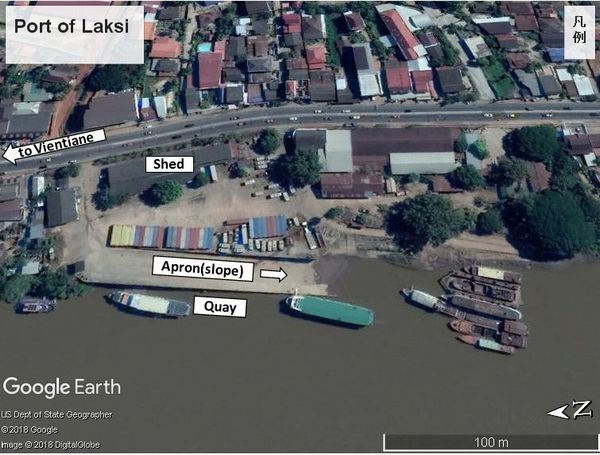
The Port of Laksi at the time of high-water
The quay and apron are designed to accommodate berthing, water level elevation in the Mekong River, and loading and unloading cargos
【Reported by Yutaka Sunohara (The Ports and Harbors Association of Japan),
International Division, Board of Director, JSCE】
- Overseas Projects -
The Tanjung Priok Access Road Construction Project (Phase I), Package 2, Section E2 Contract, Jakarta, Indonesia
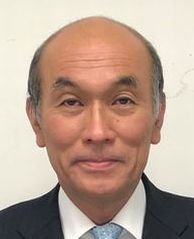
Kenichi Nakajima
(Kajima Corp.)
As known in conjunction with recently high economic growth of Indonesia, further highway development in the Jakarta Metropolitan Area must be indispensable transportation infrastructures as well as other important national policies. Based upon the Jakarta Metropolitan Transportation Master Plan, the Access Road Project below, connecting routes of the highway network located in Tanjung Priok Port area that is the largest import/export port in Jakarta, is positioned as an crucial part of the National Transport System in Indonesia, and thus it was financially supported by ODA LOAN of Japan International Cooperation Agency (JICA).
This Package 2, Section E2 Contract is for the highway viaduct construction of 2.74 km long and road improvement works on the ground as shown in Photo-1 taken aerially by the Drone. The viaduct consists of various shapes of 120 piers and U shaped precast pre-stressed concrete girders whose numbers are 614 pieces. For example, Photo-2 was taken for the Y shaped piers nearby P20 to P25. In addition, this project includes electrical and mechanical facilities such as toll gate plazas as indicated in Photo-3. In respect of traffic demand forecast, 24 hour traffic volume for this Section E2 is approximately 70,000 to 140,000 vehicles, including about 30,000 freight vehicles in both directions on a daily basis.
As to the construction progress, due to its tight project schedule, several new technologies were adopted to this contract. For instance, to a sharp curve and complication of the highway elevation for either longitudinal or cross-sectional directions, Construction Information Modeling (CIM), that is sometimes recognized as Building Information Modeling (BIM), was applied during the design and construction periods in order to facilitate the works in avoiding miscommunications among all the parties. Furthermore, aerial videos by Drone Technology to preiodically check the progress of constrution and the communication network by using Social Network System (SNS) were adopted to immediately cope with safety and environmental protection management on the site together with the clients.
As a result of every effort, the entire construction of this Access Road Project was completed on 28 March 2017, and opened to public traffic soon after the ceremony, attended by the Indonesian President and the representatives of the Japanese Government held on 15 April 2017. As expected, currently this highway is so much contributing to mediate traffic congestions in the Tanjung Priok Port area the largest port in Jakarta where so many container trailers runs every day; at the same time, influencing positive impacts not only directly on importation/ exportation, but also indirectly on the socio-economic development and environmental protection situation in the Jakarta Metropolitan Area.
Lastly, so many supports from all the parties relating to this project are greately appreciated to complete this Package 2, Section 2 Contract.

Photo-1 Overall Aerial View of Tanjung Priok Access Road, Section E2 Contract

Photo-2 Viaduct Structures near Piers P20 to P25

Photo-3 Typical Toll Gate Plaza
【Reported by Kenichi Nakajima (Kajima Corp.)】
【Alumni of DOBOKU Series】
“The Ground's behavior prediction method and I”
Phommachanh Viradeth
OYO Corporation Tokyo Branch
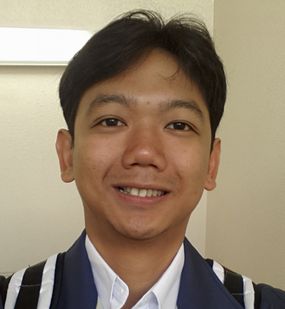
Phommachanh Viradeth
OYO Corporation Tokyo Branch
Beginning of the voyage
The Lao People's Democratic Republic (Laos) was a new independent country in 1975, When I was a child in 90s, infrastructure development works was done everywhere in the capital city of Laos called Vientiane. Sightings such as plumbing work, road repair work, Mekong River embankment maintenance work etc., have come into everyday life and civil engineering work became a yearning work unnoticed.
At that time, there were hundreds of students studying abroad from Laos every year. I also dreamed about studying abroad. Finally I also took this wave (timing) and decided to study abroad in Japan as a scholarship student in 2004, fourteen years ago from that day I came to Japan. I was studied at Tokyo Japanese Language Education Center (Japanese Language School), Kochi National College of Technology and Kobe University. And after obtaining the doctoral degree at the Kobe University in 2014, I was Joined OYO Corporation which one of the leading ground consultancy companies in Japan and has reached the present.
Predictions and Forecast
Unless you are an ESP(Extra Sensory Perception), you can not predict the future. For this reason, engineers in each field have made efforts to predict future phenomena based on "assumptions" derived from past cases and experiences in addition to the theory of individual phenomena. When asking "forecast / prediction", there are not many people remembering the weather. The weather forecast uses simulation based on the theory of aerodynamics and thermodynamics using a huge amount of data obtained from hundreds of observation points throughout Japan and engineers observe the results and predict and forecasts of future weather.
Why I was interested in prediction technology, that was the reason I was assigned to the laboratory of geotechnical engineering at Kobe University. At Kobe University, I learned about what is called the theory on soil, such as continuum mechanics, finite element method and mathematical model of soil from the 4th grade undergraduate students to the completion of doctoral course. In the laboratory, I learned basic programming to express mathematical models. Therefore, I met the method of predicting the behavior of the ground through the soil / water finite element analysis program "DACSAR". At the time, Professor Iizuka's class asked, "Prediction is to identify future events based on theory, and it is just a guess without theoretical reasons" is still one word to remember and I It is a driving force for my prediction technology of. After that, I got a doctoral degree, (doctor thesis title: earth / water / air coupling problem in unsaturated earth structure) I started to work for a consulting company based in the ground with a motivation to solve the problems in the field, using advanced analysis (behavior prediction) I have studied.
After entering this consulting company of the ground system, I am in charge of a practical series of ground survey work (planning → ground survey → sampling taking → indoor test → preparation of analysis section → setting analysis constant → analysis execution → judgment → examination of measures) However, Many things can be experienced here because it is one of the domestic best ground consultancy companies, and I realize there are many problems with Japan's ground. such as peat in Hokkaido, proximity construction in urban areas, permeation / leakage of river banks, etc., In addition to watching not only analytical techniques but also superior observation techniques, sampling sampling and indoor test techniques, we are able to experience a series of prediction and demonstration techniques. It is not only static problems including soft ground problems but also dynamic problems such as earthquake response analysis and various ground problems, and are in charge of behavior prediction for them , that’s make me sending a lot of fulfilling days.
Of course, because the site is full of unpredictable and uncertainty, 100% prediction is impossible. This will be common to all fields. Nevertheless, there is uncertainty, considering each possibility (assumption), thinking that the task of repeating PDCA and finding the most appropriate answer is a challenging task of "prediction". Researchers thus create new analytical methods and analysis models by repeating their assumptions and demonstrations, and I believe that the prediction technology is progressing day by day.
Although, for this 14 years I want to return home as soon as possible, but as I am not more experienced and still a narrow field of vision as an engineer, I am need to experience more and spending my days while being driven by the desire to refine more technology. I can not predict where I will work in the future, but I would like to develop technology as a technician no matter where I go. Finally, thank you Professor Kawai who is a supervising teacher, and thank you for who supported my international student life, thanks you.
Profile: Phommachanh Viradeth,Born in Lao PDR in 1984. In 2004 dropped out of National University of Laos, and transferred to Kochi National College of Technology. After obtaining doctor’s degree at Kobe University in 2014, joined OYO Corporation and reaches the present.
|
《Column》 Katsuyuki Kawai, Associate Professor, Kindai University
Mr. Phommachanh studied ‘Constitutive model for unsaturated soil with application of subloading surface’ for bachelor’s degree and ‘Modelling the stress-strain behavior of coal ash mixture’ for master’s degree, and wrote doctor thesis titled ‘Soil/water/air coupled problem on unsaturated earth structures’ as application of these knowledge to numerical simulation. In those days, numerical simulation with unsaturated soil mechanics was still unstable and some modifications of modelling and algorithm were needed. He carefully solved their problems and updated the existing analysis code. His thoughtful personality made him try to do anything by himself when I instructed him. In most cases, when he consulted me about his research, his research had been much developed through his trial and error. I felt his diligence and excellence at that time. |
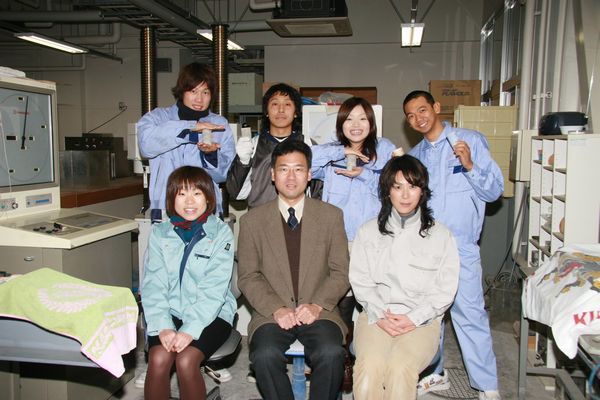
Yokoi Laboratory, Kochi National College of Technology (2008)
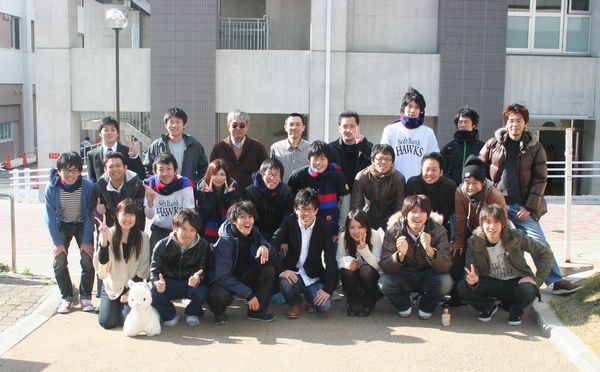
Iizuka· Kawai Laboratory, Kobe University (2011)
※Alumni of DOBOKU Series is in collaboration with Editorial Committee of JSCE Magazine.
--Internationalization of Japanese Universities --
Internationalization of Education in Civil Engineering at Kyoto University
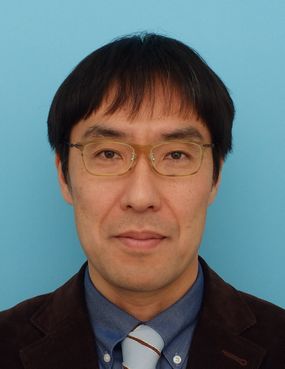
Prof.Tomomi Yagi
(Graduate School of Engineering, Kyoto University)
First, I would like to explain the education organization related to civil engineering at Kyoto University. For undergraduates, the university offers the Undergraduate Course Program of Civil Engineering at the Undergraduate School of Global Engineering, Faculty of Engineering. Students are assigned to each course in their junior year. Many of the students in the Undergraduate Course Program of Civil Engineering choose to go on to graduate school, mainly in the Department of Civil and Earth Resources Engineering or the Department of Urban Management at the Graduate School of Engineering. The graduate schools have accepted a large number of international students. However, only those who have received Japanese language education can be enrolled in the undergraduate courses.
In FY2009, Kyoto University was selected for the Global 30 (G30) Program, a project to facilitate networking for the internationalization of universities. Kyoto University established the Undergraduate International Course Program of Civil Engineering, which gives the classes of Undergraduate Course Program of Civil Engineering in English at the Undergraduate School of Global Engineering, and the International Course in the master’s degree program. As a result, the university is now able to teach students in English from their freshman year until they receive their doctorate. It was especially difficult to establish the Undergraduate International Course Program of Civil Engineering due to numerous problems encountered in attracting international students, holding classes in English, and recruiting foreign teachers. However, these hurdles were overcome and the program started in April 2011. A total of 71 international undergraduate students (20 of them women) have been enrolled as of April 2018. Students are from 16 different countries, including many from Asia, and now some from Africa and North and South America. In March 2017, members of the inaugural class completed the master’s degree program, and have played an active role in companies or institutes such as general contractors in Japan and expressway corporations in their countries.
Currently, Kyoto University and its graduate schools have many international students. But as teachers specialized in civil engineering, our internationalization objective means more than simply accepting international students. What is most important is to internationalize general Japanese students. Therefore, since the establishment of the course in 2011, up to ten general Japanese students have been enrolled in the International Program each year, and they receive their education in English from their freshman year together with the international students. Sixty-seven students (ten of them women) have been enrolled in the program so far. One of the characteristics of the International Program is the junior-year internship program conducted during the summer. In this program, international students are dispatched to Japanese companies and Japanese students to companies overseas so that every student can experience working in a foreign country. We also try to internationalize Japanese students in the general civil engineering courses through classes given in English, which constitute half of the classes taken in the master’s degree program, discussions with international students in English in laboratories, presentations at international conferences, dispatching students abroad, and other programs. In other words, we do not believe that it is enough to simply teach students in English. Our objective is to foster civil engineers who are fluent in foreign languages, understand different cultures, and can play an active role in the world.
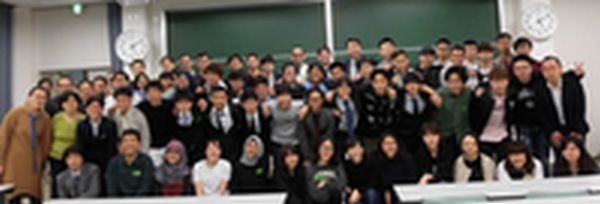
FY2018 International Program Freshmen Welcome Party
【Reported by Prof. Tomomi Yagi, Graduate School of Engineering, Kyoto University】
Enjoy Learning with Japan’s First Civil-Engineer-Giant Karuta Card Game!
The History and Attraction of Civil Engineering
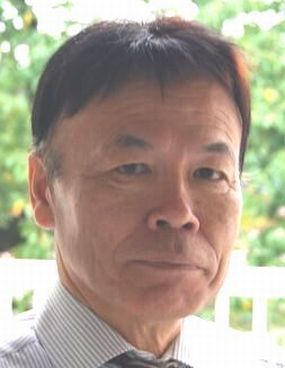
Hideki Ogata
(Director of Civil Engineering Literacy Promotion Group, JSCE Communications and Public Relations Center)
The Japan Society of Civil Engineers has developed the Civil-Engineer-Giant Karuta Card Game. Players can learn about the achievements, ways of thinking, and passion of the pioneers of civil engineering while having fun playing cards.
The origin of the name of the Japanese karuta card game comes from the Portuguese word carta. The karuta card game was conceived through the combination of the Japanese traditional shell-matching game and European card games. The fact that the karuta game could be played anywhere by both adults and children motivated us to make our own card game with a civil-engineer-giant theme. Civil engineering giants are pioneers who since ancient times have protected people’s lives and property from natural disasters and established the country’s land so that everyone could live a productive life. We want the players to know that the technologies developed by these pioneers, and the hardships that they went through, support our lives today. This is what we hope to accomplish. The karuta card game can be used as a study aid for learning about the history of civil engineering, an educational tool that can be enjoyed at home and in the community, and other purposes. If the players develop a favorite civil engineering giant, they can learn how this giant contributed to civil engineering projects. Players can also look for and study an engineer who contributed to the area where they live. We expect players to explore the world of civil engineering on their own.
Forty-eight civil engineers are introduced in efuda picture cards and yomifuda reading cards. Not only Japanese engineers played a leading role in establishing the land of Japan; the karuta card game also includes famous foreign engineers and technicians who contributed to the modernization of the country. Examples include D. Bernoulli and L. Euler of the world of mathematics, and the great English engineer I. K. Brunel, who is said to have changed the landscape of England through innovative design and construction. In the Meiji Era, when Japan opened its doors to the world, E. Morel, an Englishman who built the first railway in Japan, R. H. Brunton, who built light houses, and J. D. Rijke, who greatly contributed to flood-control measures, guided Japan with advanced scientific technologies. Japan’s rapid modernization would never have been achieved without the technologies and passion of those foreign engineers.
The objective of the Civil-Engineer-Giant Karuta Card Game is to serve as a tool to know, learn, and enjoy the historical role and value of civil engineering, which has been related to humans and nature, by introducing civil engineer giants.
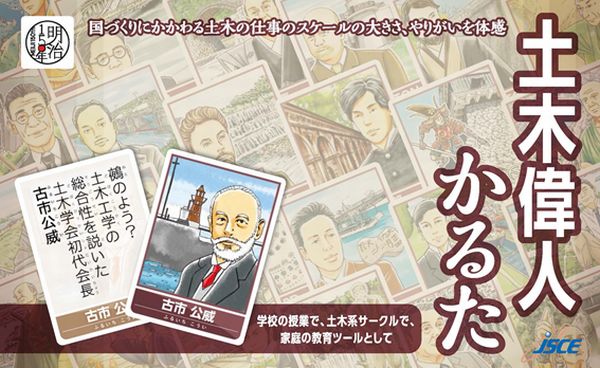
【Reported by Hideki Ogata, JSCE Communications and Public Relations Center】
Updates
-
◆FY2017 JSCE International Lifetime Contribution Award and International Outstanding Collaboration Award Celebration Party
http://committees.jsce.or.jp/kokusai/node/130
◆CECAR8 Online Registration (Early Bird): June 1 – Jan 31, 2019
http://www.cecar8.jp/
◆Japanese Civil Engineers the Global Leaders Symposium Series No.12 July 19, 2018.
http://committees.jsce.or.jp/kokusai/node/129
◆2018 JSCE Annual Meeting International Program in Hokkaido, August 29 and 30, 2018
The 20th International Summer Symposium;“When a Mega Disaster Strikes... - How would you respond if you were a mayor? -”
http://committees.jsce.or.jp/kokusai/
◆Online Museum of Civil Engineering “DOBOHAKU –Tokyo Infrastructure Anatomy –” (English ver.)
http://www.dobohaku.com/tokyo/en/
◆The International Infrastructure Archives– A Compilation of Japan’s Greatest Projects in Transfer of Civil Engineering Technology in Service –
http://www.jsce.or.jp/e/archive/
◆Concrete Committee International Newsletter No. 53
http://www.jsce.or.jp/committee/concrete/e/newsletter/newsletter53/index.html
◆Asian Civil Engineering Coordinating Council (ACECC) International Newsletter archives
http://www.acecc-world.org/newsletter.html
◆IAC “News Pick Up!!” on the JSCE Japanese website
http://committees.jsce.or.jp/kokusai/node/118
◆Summary of feature articles in JSCE Magazine Vol. 103, No. 6, June 2018 on the JSCE website
http://www.jsce-int.org/pub/magazine
◆Journal of JSCE
https://www.jstage.jst.go.jp/browse/journalofjsce
◆IAC Students and Alumni Network
http://www.jsce-int.org/IAC_network
IAC News Subscription
The IAC News is one of the communication tools to share information and ideas with the members. We would like to invite you, your friends and colleagues to join the communication and to subscribe the IAC News. Please register online: (http://www.jsce-int.org/node/150). We look forward to meeting you.

